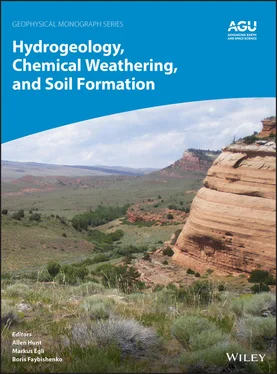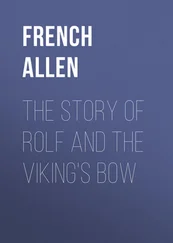64 Jenny, H. (1930). An equation of state for soil nitrogen. Journal of Physical Chemistry, 34, 1053–1057.
65 Jenny, H. (1941). Factors of soil formation: A system of quantitative pedology. New York: McGraw‐Hill.
66 Jenny, H. (1946). Arrangement of soil series and types according to functions of soil forming factors. Soil Science, 61, 375–391.
67 Jenny, H. (1958). The role of the plant factor in pedogenic functions. Ecology, 39, 5–16.
68 Jenny, H. (1961a). Derivation of state factor equations of soil and ecosystems. Soil Science Society of America Proceedings, 25, 385–388.
69 Jenny, H. (1961b). E. W. Hilgard and the birth of modern soil science. Pisa, Italy: Collana della Rivista ‘Agrochimica’ and Berkeley, California: Farallon.
70 Jenny, H. (1980). The soil resource: Origin and behaviour (Ecological Studies, vol. 37). New York: Springer.
71 Johnson, D. L. (1985). Soil thickness processes. In P. Jongerius (Ed.), Soils and geomorphology (Catena Supplement 6, pp. 29–40). Braunschweig: Catena Verlag.
72 Johnson, D. L. (1990). Biomantle evolution and the redistribution of earth materials and artifacts. Soil Science 149, 84–102.
73 Johnson, D. L. (2002). Darwin would be proud: Bioturbation, dynamic denudation, and the power of theory in science. Geoarchaeology: An International Journal, 17, 7–40.
74 Johnson, D. L., Domier, J. E. J., & Johnson, D. N. (2005a). Reflections on the nature of soil and its biomantle. Annals of the Association of American Geographers, 95, 11–31.
75 Johnson, D. L., Domier, J. E. J., & Johnson, D. N. (2005b). Animating the biodynamics of soil thickness using process analysis: A dynamic denudation approach to soil formation. Geomorphology, 67, 23–46.
76 Johnson, D. L., & Hole, F. D. (1994). Soil formation theory: A summary of its principal impacts on geography, geomorphology, soil–geomorphology, Quaternary geology and paleopedology. In R. Amundson (Ed.), Factors of soil formation: A fiftieth anniversary retrospective (Soil Science Society of America Special Publication 33, pp. 111–126). Madison, WI: Soil Science Society of America.
77 Johnson D. L., Keller, E. A., & Rockwell T. K. (1990). Dynamic pedogenesis: New views on some key soil concepts, and a model for interpreting Quaternary soils. Quaternary Research, 33, 306–319.
78 Johnson, D. L., & Schaetzl, R. J. (2015). Differing views of soil and pedogenesis by two masters: Darwin and Dokuchaev. Geoderma, 237–238, 176–189.
79 Johnson D. L., & Watson‐Stegner, D. (1987). Evolution model of pedogenesis. Soil Science, 143, 349–366.
80 Kline, J. R. (1973). Mathematical simulation of soil–plant relationships and soil genesis. Soil Science, 115, 240–249.
81 Krupenikov, I. A. (1992). History of soil science: From its inception to the present. New Delhi: Oxonian Press.
82 Leguédois, S., Séré, G., Auclerc, A., Cortet, J., Huot, H., Ouvrard, S., et al. (2016). Modelling pedogenesis of Technosols. Geoderma, 262, 199–212.
83 Li, X., McCarty, G. W., Karlenc, D. L., & Cambardellac, C. A. (2018). Topographic metric predictions of soil redistribution and organic carbon in Iowa cropland fields. Catena, 120, 222–232.
84 Lin, H. S. (2003). Hydropedology. Vadose Zone Journal, 2, 1–11.
85 Lin, H. S. (2011). Three principles of soil change and pedogenesis in time and space. Soil Science Society of America Journal, 75, 2049–2070.
86 Lin, H. S. (2012). Hydropedology: Addressing fundamentals and building bridges to understand complex pedologic and hydrologic interactions. In H. Lin (Ed.), Hydropedology: Synergistic integration of soil science and hydrology (pp. 3–40). Amsterdam: Academic Press.
87 Ma, Y., Lia, X., Guo, Li, & Lin, H. (2017). Hydropedology: Interactions between pedologic and hydrologic processes across spatiotemporal scales. Earth‐Science Reviews, 171, 181–195.
88 Major, J. (1951). A functional factorial approach to plant ecology. Ecology, 32, 392–412.
89 Mattson, S. (1938). The constitution of the pedosphere. Annals of the Agricultural College of Sweden, 5, 261–276.
90 McBratney, A. B., Mendonça Santos, M. L., & Minasny, B. (2003). On digital soil mapping. Geoderma, 117, 3–52.
91 McSweeney, K., Slater, B. K., Hammer, R. D., Bell, J. C., Gessler, P. E., & Petersen, G. W. (1994). Towards a new framework for modeling the soil–landscape continuum. In R. Amundson, J. Harden, & M. Singer (Eds.), Factors of soil formation: A fiftieth anniversary retrospective (Soil Science Society of America Special Publication Number 33, pp. 127–145). Madison, WI: Soil Science Society of America.
92 Milne, G. (1935a). Some suggested units of classification and mapping, particularly for East African soils. Soil Research, 4, 183–198.
93 Milne, G. (1935b). Composite units for the mapping of complex soil associations. Transactions of the Third International Congress of Soil Science, Oxford, England, 1935. 1, 345–7.
94 Milne, G. (1936). Normal erosion as a factor in soil profile development. Nature, 138, 548–549.
95 Minasny, B., & McBratney, A. B. (1999). A rudimentary mechanistic model for soil production and landscape development. Geoderma, 90, 3–21.
96 Minasny, B., McBratney, A. B., & Salvador‐Blanes, S. (2008). Quantitative models for pedogenesis: A review. Geoderma, 144, 140–157.
97 Moore, I. D., Gessler, P. E., Nielsen, G. A., & Peterson, G. A. (1993). Soil attribute prediction using terrain analysis. Soil Science Society of America Journal, 57, 443–452.
98 Moore, I. D., Grayson, R. B., & Ladson, A. R. (1991). Digital terrain modelling: A review of hydrological, geomorphological, and biological applications. Hydrological Processes, 5, 3–30.
99 Morison, C. G. T. (1949). The catena concept and the classification of tropical soils. In Proceedings of the First Commonwealth Conference on Tropical and Sub‐Tropical Soils, 1948 (Commonwealth Bureau of Soil Science, Technical Communication No. 46, pp. 124–128). Harpenden, England: Commonwealth Bureau of Soil Science.
100 Morison, C. G. T., Hoyle, A. C., & Hope‐Smith, J. F. (1948). Tropical soil–vegetation catenas and mosaics: A study in the south‐western part of the Anglo‐Egyptian Sudan. Journal of Ecology, 36, 1–84.
101 Muhs, D. R. (1982). The influence of topography on the spatial variability of soils in Mediterranean climates. In C.E. Thorn (Ed.), Space and time in geomorphology (pp. 269–284). London: George Allen & Unwin.
102 Muhs, D. R. (1984). Intrinsc thresholds in soil systems. Physical Geography, 5, 99–110.
103 National Research Council (2001). Basic research opportunities in Earth science. Washington, DC: National Academy Press.
104 Neustruev, S. S. (1915). On soil combination of plains and uplands [in Russian]. Pochvovednie [Soil Science], 1, 62–73.
105 Nikiforoff, C. C. (1959). Reappraisal of the soil. Science, 129, 186–196.
106 Odgers, N. P., McBratney, A. B., & Minasny, B. (2008). Generation of kth‐order random toposequences. Computers & Geosciences, 34, 479–490.
107 Parton, W. J., Schimel, D. S., Cole, C. V., & Ojima, D. S. (1987). Analysis of factors controlling soil organic matter levels in Great Plains grasslands. Soil Science Society of America Journal, 51, 1173–1179.
108 Pawlika, Ł., & Šamonil, P. (2018). Soil creep: The driving factors, evidence and significance for biogeomorphic and pedogenic domains and systems – A critical literature review. Earth‐Science Reviews, 178, 257–278.
109 Peacock, E., & Fant, D. W. (2002). Biomantle formation and artifact translocation in upland sandy soils: An example from the Holly Springs National Forest, North‐Central Mississippi, U.S.A. Geoarchaeology: An International Journal, 17, 91–114.
110 Pereira, T. T. C., Almeida, I. C. C., de Oliveira, F. S., Schaefer, C. E. G. R., de Souza Pinheiro, L., & Matuk, F. A. (2018). Hydropedology of a high tableland with cerrado, Brazilian Central Plateau: The Frutal Catchment case study. Revista Brasileira de Ciência do Solo, 42, e0160523. https://dx.doi.org/10.1590/18069657rbcs20160523
Читать дальше












